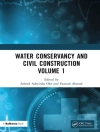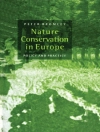This book helps the readers get a holistic understanding of the emergence of biochar-nanocomposite research. The low and long-term exposure of persistent hazardous pollutants in environment is well known for damaging the water, soil, sediments, and living biota. Thus, it is a crucial step to eliminate these pollutants from environment regimes to prevent the on-site destruction or the transfer into the food chain. Biochar is a carbon-rich solid material generated through pyrolysis of biomass, and currently, it is covering the hotspot in environmental management of pollutants. It is being utilized for the efficient immobilization and sorption of organic pollutants, heavy metals, dyes, improvement of soil redox conditions, aggregate stabilization, photocatalytic degradation, and for carbon sequestration. The fascinating properties like surface area, porous structures, functional groups, and mineral components turn it into suitable candidate for the removal of various class of pollutants from environmental matrices. Different reactions like sorption, reduction, precipitation, solidification, and degradation are mainly responsible for the effective cleaning of xenobiotics from environment through biochar application. However, rapidly evolving contaminants in the environment have made the remediation more complex, expensive, and challenging. In view of these aspects, the modification of biochar through the doping of nanometals/metal oxides/surfactants/ or chemical entities will result in modified biochar with high surface area, more functional entities, improved physical, chemical, thermal, and mechanical characteristics with more adsorptive sites. Inclusion of these exclusive properties can be done through magnetic modification, impregnation of nanometals/ metal oxides/surfactants, amination, acid/base reactions, steam activation, etc. The resulted biochar-based nanocomposites have demonstrated a vital role in remediation of persistent organic pollutants, radionuclei, and heavy metals through the various interaction mechanisms like surface complexation, π–π interaction, electrostatic interaction, hydrogen bonding, Fenton process, and photocatalytic degradation. Currently, advanced research work has been carried out for the designing of modified composites of biochar to achieve maximum removal efficiency, reusability, biotoxicity, and sustainability. Hence, for selective removal of pollutants through designed biochar surface with the focused experimentation toward optimization of feedstocks, process variables, appropriate impregnation of nanomaterials, interaction with secondary pollutants, physical environment, longevity, and regeneration will definitely pave the way for safe and commercial application of biochar-based nanocomposites.
Inhaltsverzeichnis
Part 1 – Biochar-based nanocomposites: An Introduction.- 1 – Biochar-based nanocomposite materials: Types, characteristics, physical activation, and diverse application scenarios.- Part 2. Synthesis of biochar-based heterostructures/composites and their characteristics.- 2. Physical activation and nano-scale transformation of biochar using different mechano-chemical techniques.- 3. Biochar-based hydrogel nanocomposites: An innovative technique for contaminant-free environment.- 4. Production of biochar-based nanocomposites from chemical and biological methods.- 5. Comparative investigation of biochar-based nanocomposites over pristine biochar: An overview.- Part 3 – Application of biochar-based nanocomposites for remediation of emerging contaminants from the environment.- 6. Biochar-based nanocomposites for separation of inorganic contaminants from the environment.- 7. Biochar-based nano-composites for the removal of organic environmental contaminants.- 8. Role of biochar supportednano-photocatalysts for removal of dyes.- 9. Consideration about regeneration, reactivity, toxicity, and challenges of biochar-nanocomposites.- 10. Engineered biochar-based nano-composites: A sustainable solution for smart agriculture.- 11. Applications and future perspectives of agricultural waste biochar and its nanocomposites.
Über den Autor
Dr. Disha Mishra has received her doctorate from CSIR-Central Institute of Medicinal and Aromatic Plants, Lucknow, India. Her research interest is synthesis of nano-bioformulation, nano-biocomposite preparation, biochar production, and its application for remediation of pollutants from soil, soil chemistry, and solid waste management. She is an emerging researcher and has published several research articles and book chapters in peer-reviewed journals. Dr. Mishra has 23 Scopus publications with 263 citations and a Scopus h-index 7.
Dr. Rishikesh Singh has completed his Ph.D. from Institute of Environment & Sustainable Development (IESD), Banaras Hindu University, Varanasi, India. He is a budding environmental scientist with his research interests in soil carbon dynamics, land-use change and management, waste management, environmental contaminants, biochar, and carbon sequestration. He has published several research and review articles, and is a reviewer of several international journals of Elsevier, Wiley, Taylor and Francis, Frontiers, PLo S, and Springer Nature groups. He has published six books in leading international publishers such as Elsevier, Springer Nature, Wiley and NOVA publishers. Dr. Singh has 56 Scopus publications with 886 citations and a Scopus h-index 18.
Dr. Puja Khare is working as a principal scientist in the Plant Production and Protection Division at CSIR-Central Institute of Medicinal and Aromatic Plants, Lucknow, India. She has obtained her doctorate from Dayalbagh Educational Institute (DEI), Agra, India. She has research experience of more than 25 years and published more than 100 peer-reviewed publications. She is a member of various national and international scientific bodies. Apart from this, Dr. Khare has received many prestigious awards and honors for her contribution in the growth of science. Her research interests include nanoformulation for agricultural purposes, application of biochar on problematic soils, abiotic stress and medicinal plants, and environmental chemistry. Her research on the production of biochar from waste and its application as soil amendment is widely recognized












